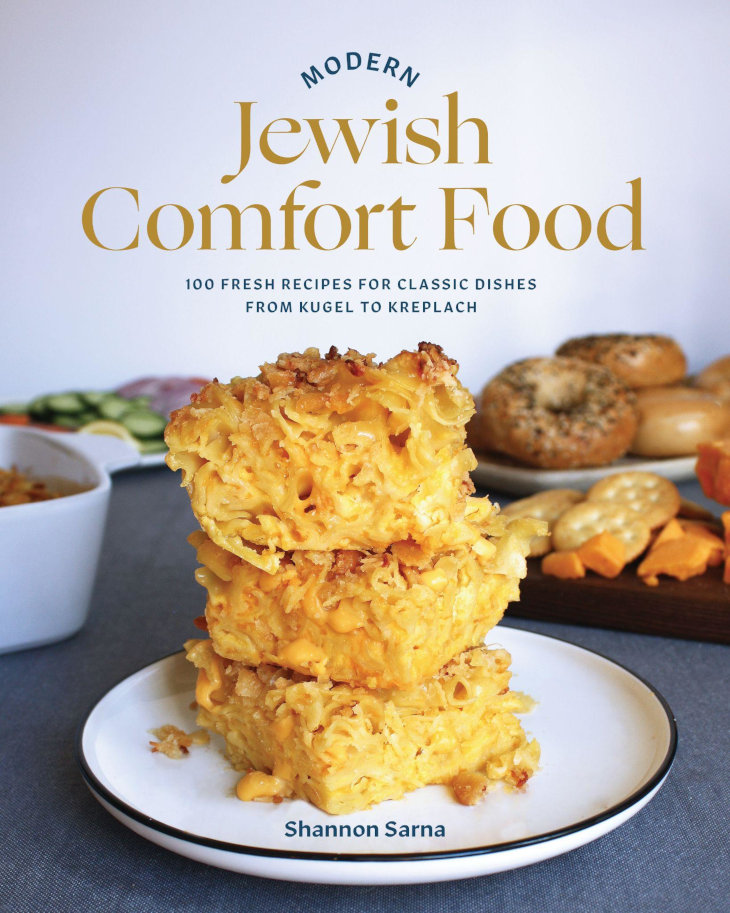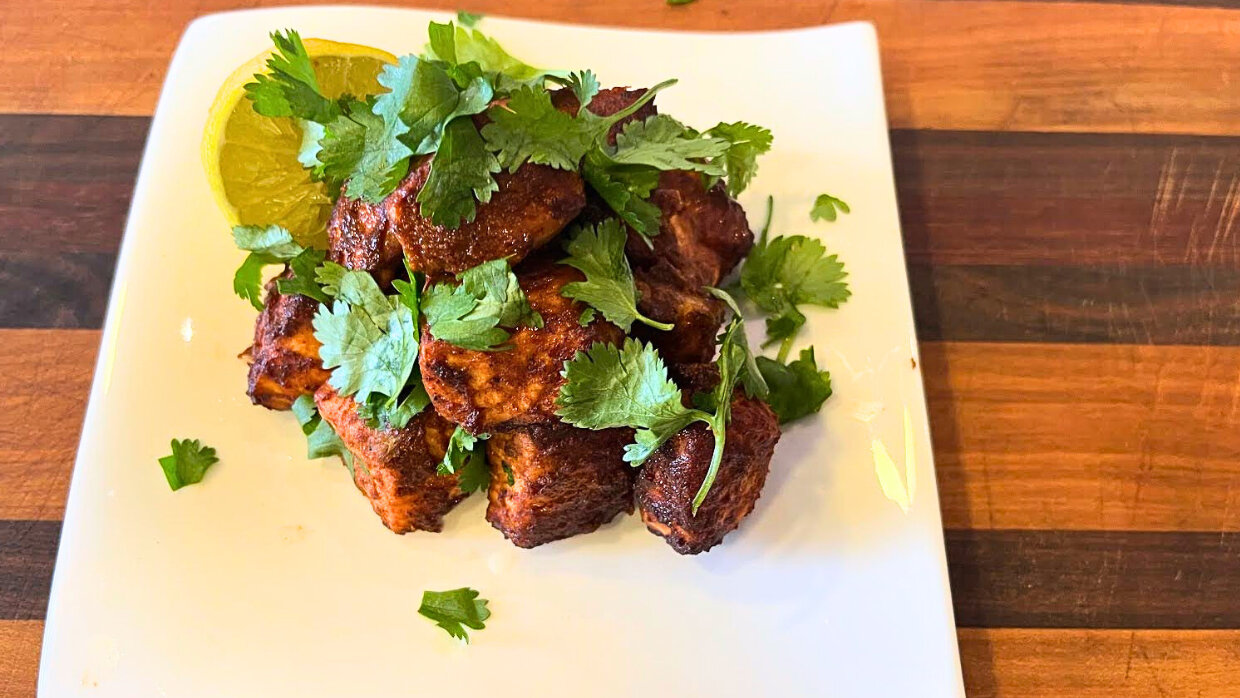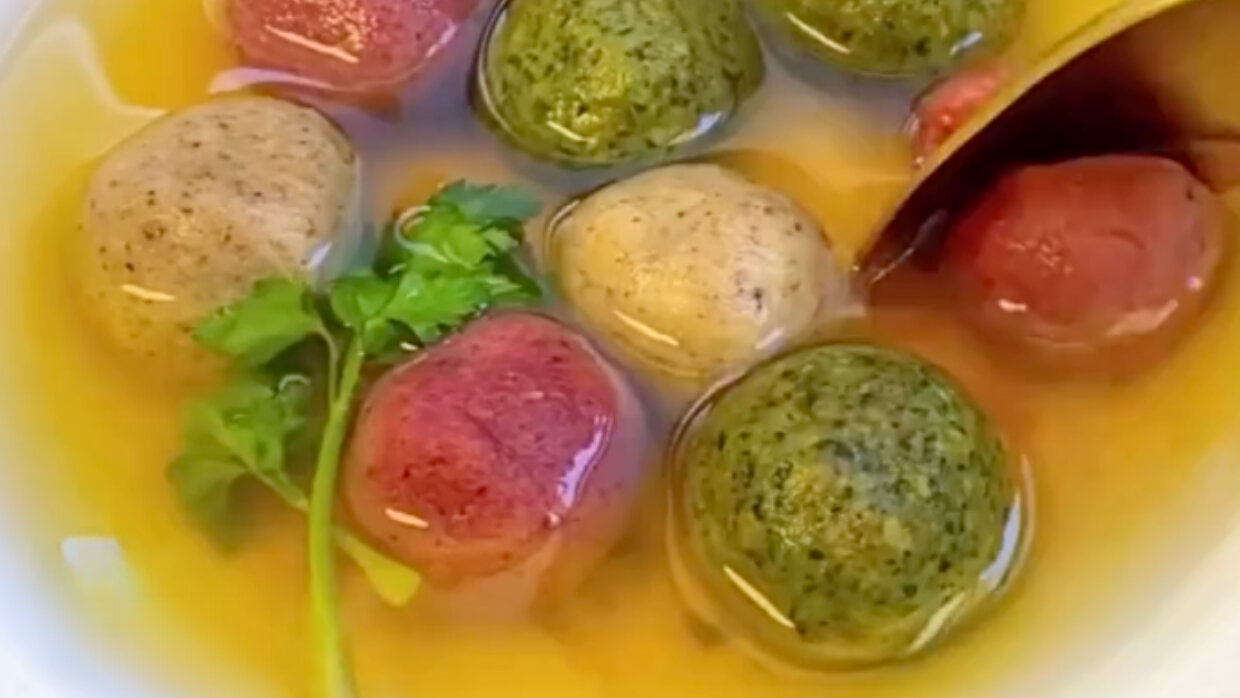As I turned the pages of Shannon Sarna’s newest cookbook, Modern Jewish Comfort Food, I could hear the possible comments of resistance in my head: “No, Shakshuka Pizza isn’t Shakshuka.” “There’s no such thing as Jewish Ramen Soup.” “You can’t put turkey and mashed potatoes in kreplach and call it kreplach.” But I urge you to hear me out: while many of Sarna’s recipes take a twist on traditional Jewish foods, the recipes all have one thing in common: they breathe new life into our generations-old favorite dishes.
Sarna describes comfort food as “creating deliciousness from very little.” She explains that comfort food, Jewish or not, came into existence by throwing together whatever scraps were sitting around. While this practice began with our ancestors long ago, coupled with some nostalgia, Jewish kitchens uphold the tradition to this day. Sarna demonstrates this flawlessly by including sections in her cookbook which showcase what to do with leftover ingredients from recipes. Have some leftover chicken meat from making chicken soup? Whip up a quick batch of Mustard and Dill Chicken Salad. Don’t know what to do with an abundance of extra shakshuka sauce? Sop it up with Sarna’s recipe for Small-Batch Challah Rolls.

One of the best components of Modern Jewish Comfort Food is the way it makes everyone, regardless of dietary restrictions, feel welcomed at the Jewish table. Each chapter includes vegetarian, vegan, and gluten free options for even the most traditionally meat-heavy dish. If you’re a vegan who has never been able to taste the flavorful aromas of shakshuka, try out Smoky Vegan Shakshuka with Crispy Chickpeas. Vegetarian, but always wondered what your grandparents’ stuffed cabbage rolls tasted like? Recreate the dish using finely chopped mushrooms instead of ground meat. Whatever your need or taste preference, Sarna encourages readers to mix and match recipes and ingredients. She urges people to have fun in the kitchen swapping the sauce from one recipe with the sauce from another recipe. And, while easy-to-follow language makes using the recipes a simple process, visual learners are not forgotten. Gorgeous step-by-step colorful photos accompany the most complicated recipes.

Ultimately, Sarna makes comfort food modern by meeting readers where they are today. She does this using a conversational tone, which brings readers into the Jewish food conversation. The “let’s talk about” sections that begin each chapter masterfully draw readers in from the get-go, not just to cook Jewish food, but to learn about Jewish food origins. Sarna connects recipes with contemporary cultural references, such as the Seinfeld show and YouTube videos. She relates to the reader, by providing solutions to our biggest cooking preparation insecurities: she shares specific tips on where to purchase ingredients, mentioning popular stores such as Trader Joe’s and Whole Foods, and she frequently lists ingredient substitutions.
By the end of the cookbook Sarna clearly illustrates how comfort food is rooted in what brings us memories. If food is reminiscent of some time in our lives, as many of the recipes in this cookbook are for Sarna, then it works as a form of comfort.
Modern Jewish comfort food can play a unique role in cooking adventures—allowing us to create something innovative that simultaneously connects us to our past. So, if you are ready to be comforted, try resisting a little less. You might find your new favorite Jewish recipe.
Try the recipes for Thanksgiving Turkey Kreplach and Smoky Vegan Shakshuka with Crispy Chickpeas.

















